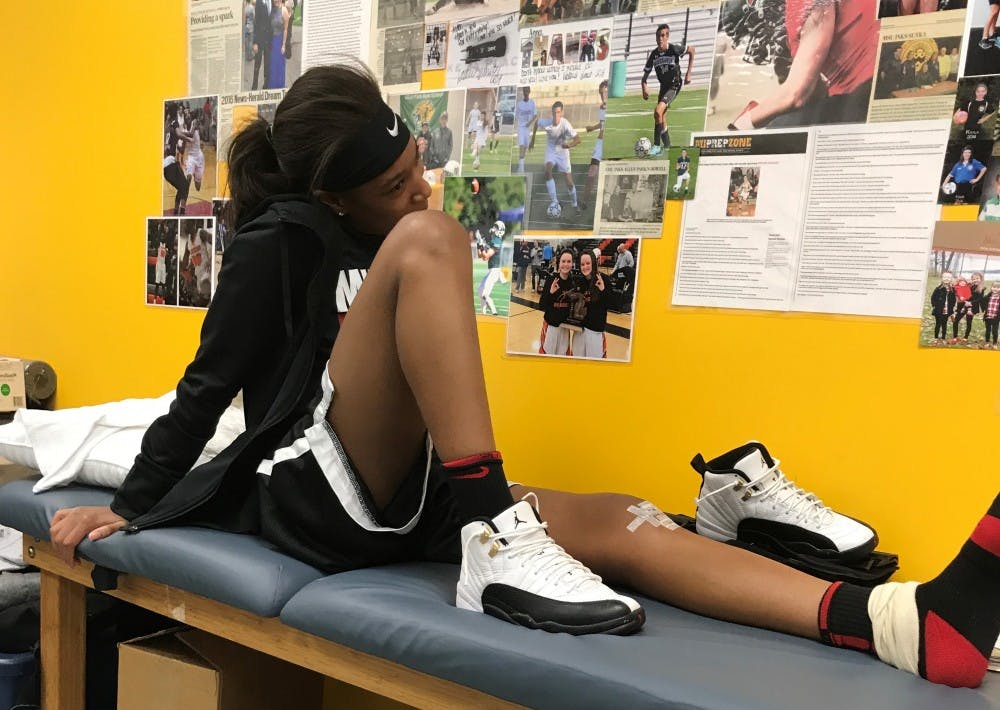Injuries are a part of any sport and sometimes athletes tear their Anterior Cruciate Ligament (ACL) in sports such as football, basketball, and track. According to medicinenet.com, this injury happens when a ligament in the knee crosses from the underside of the femur to the top of the tibia. Even if the athlete is initially in pain, the seriousness of this injury can go unrecognized.
“I didn’t understand what was going on,” said hurdler and senior Olivia Logan. “I did not think my injury was that bad. I actually started dancing on it two weeks later.”
Athletes often have questions regarding an ACL injury: how they got the injury, how to prevent it, how to treat it, how long it takes to heal, and what is the best way to heal after diagnosis. Here are some answers.
“It takes about 6-8 months for a full recovery, hip stabilizer,” said Innovative Training Solutions trainer Anna Napolitano. The treatment involves a hip stabilizer, the hamstrings and gluteus, a name shared by the three muscles in the hip, she said.
ACL injuries can lead to confusion, depression, and fear because athletes can’t participate in the sport they love.
“When I found out, I talked to my coaches and other people that it happened to. I didn’t really feel anything because I was on good pain meds. Once I realized how important I was to my team and how much they really needed me, my comeback was more serious than I thought,” said basketball player and junior Del’Janae Williams.
When an athlete tears or injures their ACL, they have to stop doing a lot of things and cannot play the sport like they used to. They have to deal with the fact of having surgery and a remaining scar on their leg for the rest of their life.
“The fact that my scar will be here forever is agonizing to me,” said Logan.
There is nothing that an athlete can do to prevent this injury; however, there are measures that can possibly lessen the possibility of harm.
“Athletes can decrease their risk for non-contact injuries by completing exercises that focus on strengthening their posterior chain (hamstrings and gluteus muscles), neuromuscular training, jump training including training in proper jump landings and core training,” said Napolitano. “Athletes should be able to perform push, pull, hinge and carry movements with ease. Finally, when developing an exercise program there should be a 2:1 ratio of posterior exercises to front exercises. So for every one front loaded exercise (squat) the athlete should be performing two posterior exercises (dead lift, RDL, reverse lunges, etc.) to create an overall stronger athletic body that will be able to produce force and accelerate and decelerate with no issues.”



